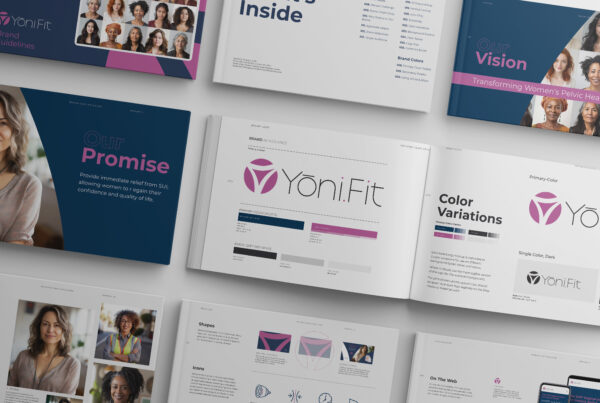Graphic design and identity systems play a crucial role in conveying information, building a narrative, and fostering a positive work environment. In the context of the rising burnout and staff shortages in the healthcare industry, a well-designed identity system can help address these challenges in the following ways:
- Visual Communication:
- Use clear and visually appealing graphics to present statistics and data related to burnout and staff shortages. Infographics, charts, and graphs can make complex information more digestible for healthcare professionals and the general audience.
- Branding for Healthcare-Centric Tech Roles:
- Develop a visual identity that reflects the transition to healthcare-centric tech roles. This can include a new logo, color scheme, and design elements that convey innovation and the integration of technology in the healthcare sector.
- Employee Engagement:
- Design materials that engage healthcare workers and potential candidates, emphasizing the benefits and opportunities presented by healthcare-centric tech roles. Illustrate how these roles can offer a reprieve from burnout and provide a more flexible and fulfilling work environment.
- Consistent Messaging:
- Establish a consistent visual and messaging identity across various communication channels, such as websites, social media, and promotional materials. Consistency fosters trust and recognition, helping healthcare professionals easily identify and connect with the information.
- Highlighting Solutions and Opportunities:
- Showcase the solutions and opportunities that healthcare-centric tech roles bring. Design visuals that emphasize how technology can improve workflow processes, enhance flexibility, and contribute to a more accommodating work environment.
- Encouraging a Positive Narrative:
- Use design elements to create a positive narrative around the potential impact of healthcare workers transitioning to tech roles. Highlight success stories, positive testimonials, and the overall benefits of this shift for both individuals and the healthcare industry.
- Internal Communication:
- Develop internal communication materials that address the concerns of healthcare workers, providing information on the changes, improvements, and support systems in place. Design materials that promote a sense of community and shared purpose.
- Advocacy for Change:
- Design materials that advocate for change within the healthcare industry, emphasizing the importance of addressing burnout and staffing shortages. Create visually compelling calls to action that encourage stakeholders to implement necessary reforms.
In summary, a thoughtfully designed identity system can serve as a powerful tool in addressing burnout and staff shortages in the healthcare industry. It can help communicate the benefits of transitioning to healthcare-centric tech roles, foster a positive and supportive narrative, and contribute to the overall well-being of healthcare professionals.




